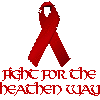Ásatrú (Paganismo Nordico)

Historia
Egyptian, Greek, Roman, and other ancient Pagan religions. Unlike Wicca, which has gradually evolved into many different
traditions, the reconstruction of Asatru has been based on the surviving historical record; it has been maintained as closely
as possible to the original religion of the Norse people.
Asatru é uma das familias Neo-Pagãs de religiões. Esta familia inclui Wicca, Druidismo Celtico, e re-criações das antigas
religiões Pagãs Egipcias, Gregas, Romanas e outras. Diferentemente da Wicca, que tem gradualmente se envolvido com
muitas tradições diferentes, a reconstrução do Asatru tem sido baseada nos registros históricos sobreviventes; que tem
sido mantida o mais proximo possivel da religião original das pessoas Nordicas.
Asatru or Ásatrú is an Icelandic word, a translation of the Danish word Asetro. The latter was coined by scholars in the
mid-19th century. It was intended to mean belief in the Asir, the Gods. In Scandinavia the religion is called Forn Siðr
(which means the Ancient way), Forn sed (the Old custom), Nordisk sed (Nordic custom), or Hedensk sed (Pagan custom).
The religion's origin is lost in antiquity. At its peak, it covered all of Northern Europe. In 1000 CE, Iceland became the second
last Norse culture to convert to Christianity. Their prime motivation was economic. Sweden was ruled by a
Pagan king until 1085 CE.
Asatru ou Ásatrú é uma palavra Islândica, uma tradução da palavra dinamarquesa Asetro. Esta ultima foi moldada por
escolares na metade do século XIX. Isto foi intencionado a significar crença nos Asir, os Deuses. Na Escandinavia,
a religião foi chamada Forn Siðr (que significa o Caminho Antigo), Forn sed (o Velho costume), Nordisk sed
(costume Nordico), ou Hedensk sed(costume Pagão). As origens da religião estão perdidas na antiguidade. No seu cume,
esta cobriu todo o Norte da Europa. Em 1000 CE, A Islândia se tornou a antepenultima cultura Nordica a se converter
ao Kristyanismo. Suas motivações prioritarias foram economicas. A Suecia foi governada por um rei Pagão até 1085 CE.
Icelandic poet Gothi Sveinbjorn Beinteinsson promoted government recognition of Asatru as a legitimate religion; this
was granted in 1972. Since the early 1970's, the religion has been in a period of rapid growth in the former Norse
countries, in Europe and North America.
O poeta Islândico Goþi Sveinbjorñ Beinteinsson promoveu o reconhecimente governamental do Asatru como uma religião
legitima; isto foi concedido em 1972. Desde meados de 1970, a religião tem estado sob um periodo de rapido crescimento
nos paises formalmente Nordicos, na Europa e America do Norte.
During the early part of the 20th Century, The National Socialist Party in Germany under Adolf Hitler attempted to pervert
Asatru by grafting parts of the religion onto the Nazi racist beliefs. This blasphemy died by the end of World War II,
although some neo-Nazi groups are now attempting to continue the practice.
This activity is in no way related to the restoration of Asatru as a legitimate Neo-Pagan religion.
Durante o começo do Século XX, O Partido Nacional Socialísta na Germania (Alemanha) sob a liderança de
Adolf Hitler, tentou perverter o Asatru pelo enxertar de partes da religião nas crenças Nazi racistas. Esta blasfêmia morreu
no final da Segunda Guerra Mundial, apesar de alguns grupos Neo-nazístas estarem tentando continuar sua pratica.
Esta atividade não esta relacionada de nenhuma forma na restauração do Asatru como uma religião Neo-Pagã legitima.
Many people are exposed to the name "Asatru" through role playing games, such as Mage: The Ascension.
Unfortunately, the Asatru of these games bear little resemblance to the real religion.
Muitas pessoas expuseram o nome "Asatru" atravéz dos jogos de RPG, como o Mage: The Ascension. (Publicado em
Portugues pela Editora Devir). Infelizmente, o Asatru destes jogos são apenas levemente semelhantes a religião de verdade.
Crenças do Asatru:
Asatru is a polytheistic religion. There are three races of Deities in the Norse pantheon. They are all regarded as
living beings who are involved in human life:
Asatru é uma religião politeísta. Ha três classes de Deidades no panteão Nordico. Todas elas são reconhecidas como
seres viventes que estão envolvidas na vida humana:
The Aesir: These are the Gods of the tribe or clan, representing Kingship, order, craft, etc.
Os Aesir: Estes são os Deuses da tribo ou clã, representando a Realeza, ordem, artezanato, etc.
The Vanir: These represent the fertility of the earth and forces of nature.
They are associated with the clan but are not part of it.
Os Vanires: Estes representam a fertilidade da terra e forças da natureza.
Eles são associados ao clã mas não são parte deste.
The Jotnar: These are actual Gods, but are referred to as giants. They are in a constant state of war with
the Aesir. They represent chaos and destruction. At the battle of Ragnarok, many of the Gods will die, the world will
come to an end and be reborn.
Os Jotnar: Estes são atualmente Deuses, mas são referidos como gigantes. Eles estão em um constante estado de guerra
com os Aesires. Eles representam caos e destruição. Como na batalha de Ragnarok, muitos dos Deuses irão morrer, o
mundo chegará a um fim e renascerá.
Life Values: They follow the Nine Noble Virtues: Courage, Truth, Honor, Fidelity, Discipline, Hospitality,
Industriousness, Self-Reliance and Perseverance. The family is greatly valued and honored. They reject any form of
discrimination based on ethnicity, gender, language, nationality, race, sexual orientation, or "other divisive criteria".
Valores de Vida: Eles seguem as Nove Nobres Virtudes: Coragem, Verdade, Honra, Fidelidade, Disciplina,
Hospitalidade, Labor, Auto-Confiança (Independencia) e Perseverança. A familia é grandemente valorizada e
honrada. Eles rejeitam quaiquer forma de discriminação baseada em etnicidade, sexo, linguagem, nacionalidade, raça,
orientação sexual, ou "outro criterio separativo".
Origins: Mankind is literally descended from the Gods. One deity, Rig visited the earth and fathered the human race.
Origens: A humanidade é literalmente descendente dos Deuses. Uma deidade, Rig, visitou a terra e foi pai da raça humana.
Od: This is the gift of ecstasy provided to humans by the Gods. It is what separates mankind from other animals,
and is our eternal link with the Gods.
Od: Este é o presente do extase presenteado aos humanos pelos Deuses. É o que separa a humanidade dos outros
animais, e é a nossa ligação eterna com os Deuses.
Creation Story: A poem Voluspa (Prophecy of the Seeress) contains an Asatru story of the creation of the universe.
Between Muspelheim (The Land of Fire) and Niflheim the Land of Ice was an empty space called Ginnungigap.
The fire and ice moved towards each other; when they collided, the universe came into being. Odin, Vili and Ve later
created the world from the body of a giant that they had slain.
Estoria da Criação: Um poema Volüspá (Profecia da Vidente) contem uma estoria da criação do universo.
Entre Muspelheim (A Terra do Fogo) e Niflheim a terra (ou pais) do Gelo estava um espaço vasio chamado Ginnungigap.
O fogo e gelo se moveram na direção um do outro; quando eles colidiram, o universo passou a existir. Odin, Vili e Ve,
mais tarde, criaram o mundo do corpo de um gigante que eles tiveram que matar.
Asatru Rituals and Practices:
Rituais e Praticas Asatru:
Their local religious communities are called Kindreds, Hearths, or Garths. Priests are called Gothi; priestesses are Gythia
Suas comunidades religiosas locais são chamadas de Kindreds, Hearths, Garths ou Hópr(no caso da Skergard e
da AVAB). "Padres"ou sacerdotes são chamados de Gothi(Godhi, Goði ou Goþi), e as "madres" ou sacerdotizas são
chamadas de Gythia (Gydhia, Gyðia ou Gyþia)
The Blot: (pronounced "bloats") This is their most common religious ritual; it is a sacrifice to the Gods. In olden days,
as with almost all ancient religions, an animal was consecrated to the deities and then slaughtered. This was not seen
as a bribe or as a method of capturing the power of the dying animal. It is simply the way in which the ancient Norse
shared their bounty with a gift to the Gods. Currently, the animal sacrifice has been replaced by the offer of beer, juice
or mead. Afterwards, those present are either sprinkled with the liquid, or drink it in sequence.
O Blot: Este é o ritual religioso mais comum; este é um sacrificio para os Deuses. Nos velhos dias, como na maioria das
antigas religiões, um animal era consagrado para as deidades e depois morto. Este não era um suborno ou um metodo de
capturar o poder do animal morrendo. Esta é uma forma simples em que os antigos Nordicos repartiam sua fartura com
um presente para os Deuses. Atualmente, o sacrificio animal foi substituido por outras oferendas como cerveja, suco ou
hidromel. Depois de tudo, os que estão presentes são borrifados com o liquido, ou bebida na sequencia.
The Sumbel: This is a ritual drinking celebration, in which a horn filled with a drink is passed around the group.
Each person delivers a greeting; a toast to the Gods, ancient heroes, or one's ancestors; or a story, song or poem.
He or she then drinks from the horn.
O Sumbel: Esta é uma celebração do ato de beber ritualmente, em que um chifre preenchido com uma bebida é
passado pelo grupo. Cada pessoa da um cumprimento; um brinde aos Deuses, antigos herois, um ancestral de alguém;
ou uma estoria, canção ou poema. Ele ou ela então bebe do chifre.
Profession or Adoption: This is the act of making a commitment to Asatru to the exclusion of any another religious dogma,
by solemnly giving an oath of allegiance and kinship to the Gods of Asgard, the Aesir and Vanir. It is a simple ceremony
usually done in the presence of a Gothi or Gythia and the rest of the Kindred, Hearth or Garth. It is taken on an oath ring
or some other sacred object.
Profissão ou Adoção: Este é o ato de fazer um compromisso para o Asatru pela exclusão de quaisquer outros
dogmas religiosos, pelo dar solenemente um juramento de aliança e parentesco aos Deuses de Asgard, os Aesir e Vanir.
Esta é uma cerimonia simples usualmente feita na presença de um Gothi ou Gythia e o resto do Kindred, Hearth, Garth
ou Hópr. Isto é tomado sob um anel de juramento ou outro objeto sagrado.

Ásatrú Vanatrú - Brazil
http://www.angelfire.com/wy/wyrd
Traduzido para o
Portugues
por
Goði Meðal Mikit Stór-Ljon Oddhinsson
Goði Octavio Augusto O.A. de Carvalho
| Site Map |
Ásatrú Vanatrú - Brazil
http://www.angelfire.com/wy/wyrd